How to Plant Grass Seed on Hard Dirt Successfully
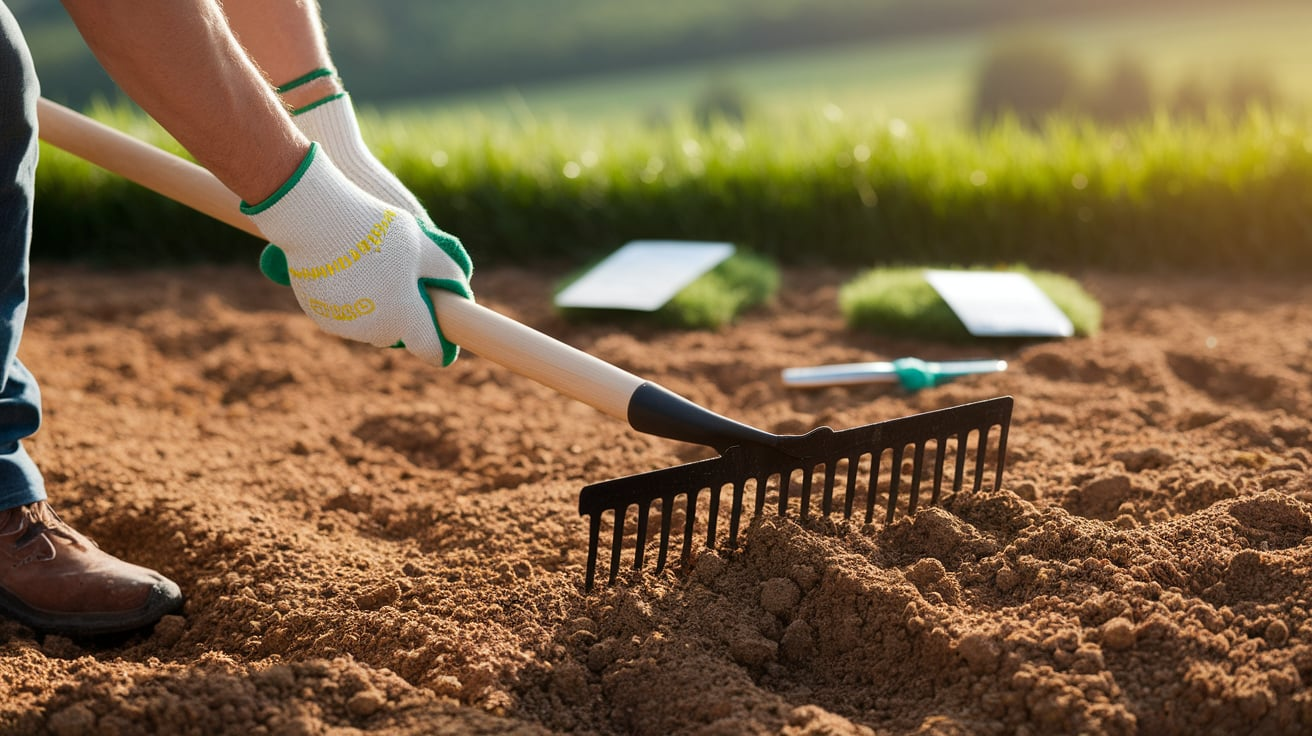
Planting grass on hard dirt can feel like a losing battle. The soil’s packed down, nothing soaks in, and the grass won’t grow like you want it to.
But don’t worry, it’s totally fixable. With a few simple steps, you can loosen up that tough ground and give your grass the space it needs to grow strong and thick.
In this guide, we’ll discuss how to break up the hard dirt, plant your seeds the right way, and care for your lawn so it fills in and lasts.
Why Hard Dirt is a Problem for Grass
Hard dirt makes it tough for grass to grow because water can’t soak in, and roots can’t spread out. There’s also not enough air or nutrients in the soil.
This typically occurs in areas with clay soil, heavy foot traffic, or spots that were cleared or compacted during construction work. Grass needs loose soil to grow well.
Tools and Materials for Planting Grass Seed On Hard Dirt
| Item | Description | Price Range |
|---|---|---|
| Grass Seed (Region Specific) | Grass seed suited for your local climate | $15 – $50 |
| Lawn Rake or Garden Fork | A tool for spreading soil or leveling the lawn | $10 – $30 |
| Topsoil or Compost | Organic material to enrich the soil for healthy growth | $25 – $75 (per yard) |
| Soil Conditioner (Optional) | Improves soil texture, aeration, and fertility | $15 – $40 (per bag) |
| Lawn Roller (Optional) | Tool for smoothing soil and seed coverage | $40 – $100 |
| Watering Can or Sprinkler | For irrigating the lawn evenly | $10 – $40 |
Step-by-Step Guide to Planting Grass Seed On Hard Dirt
Planting grass seed on hard dirt takes a little extra work, but it’s completely doable. Follow these easy steps to grow a strong, healthy lawn from tough soil.
Step 1: Test the Soil
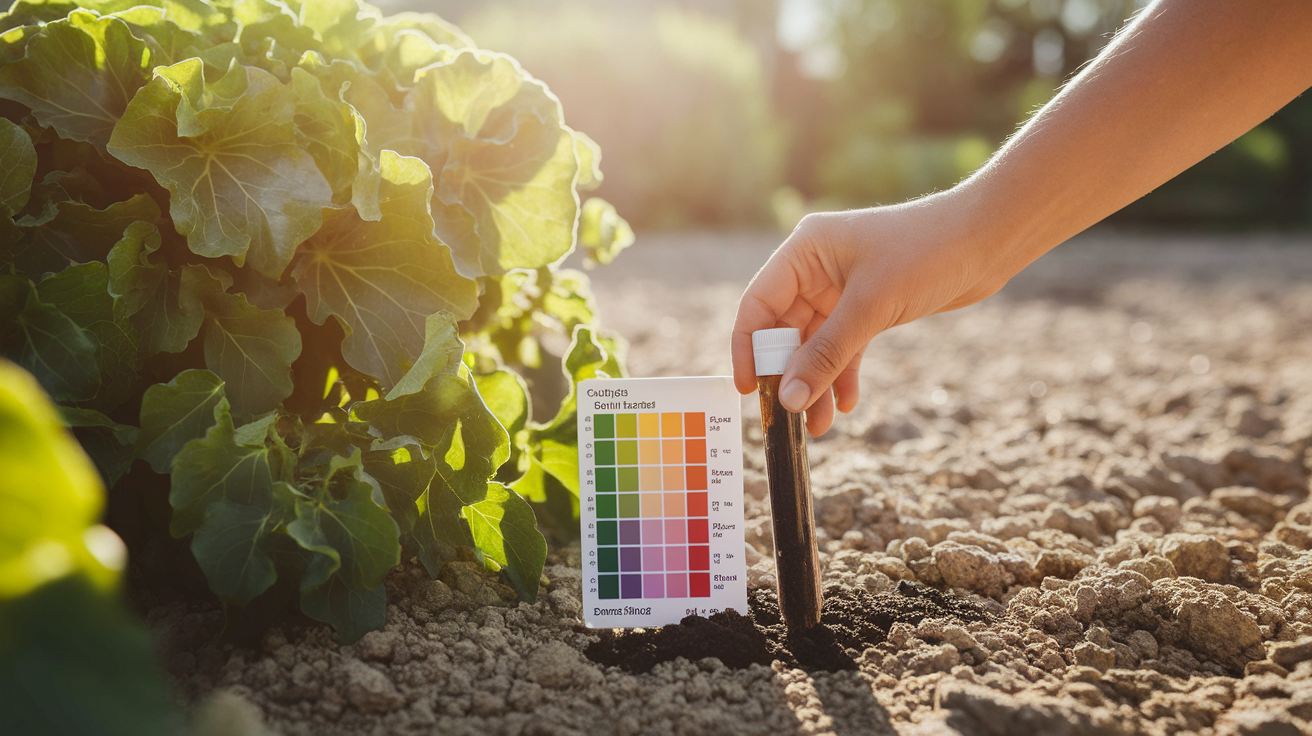
Before you start planting, it’s important to understand your soil. Testing gives you a clearer picture of what it needs to support healthy grass growth.
- Test for pH levels, drainage, and compaction to determine what your soil might be missing.
- You can buy an easy-to-use soil test kit from your local garden center. It’s a quick way to find out whether your soil needs extra nutrients or better drainage.
Step 2: Loosen the Hard Dirt
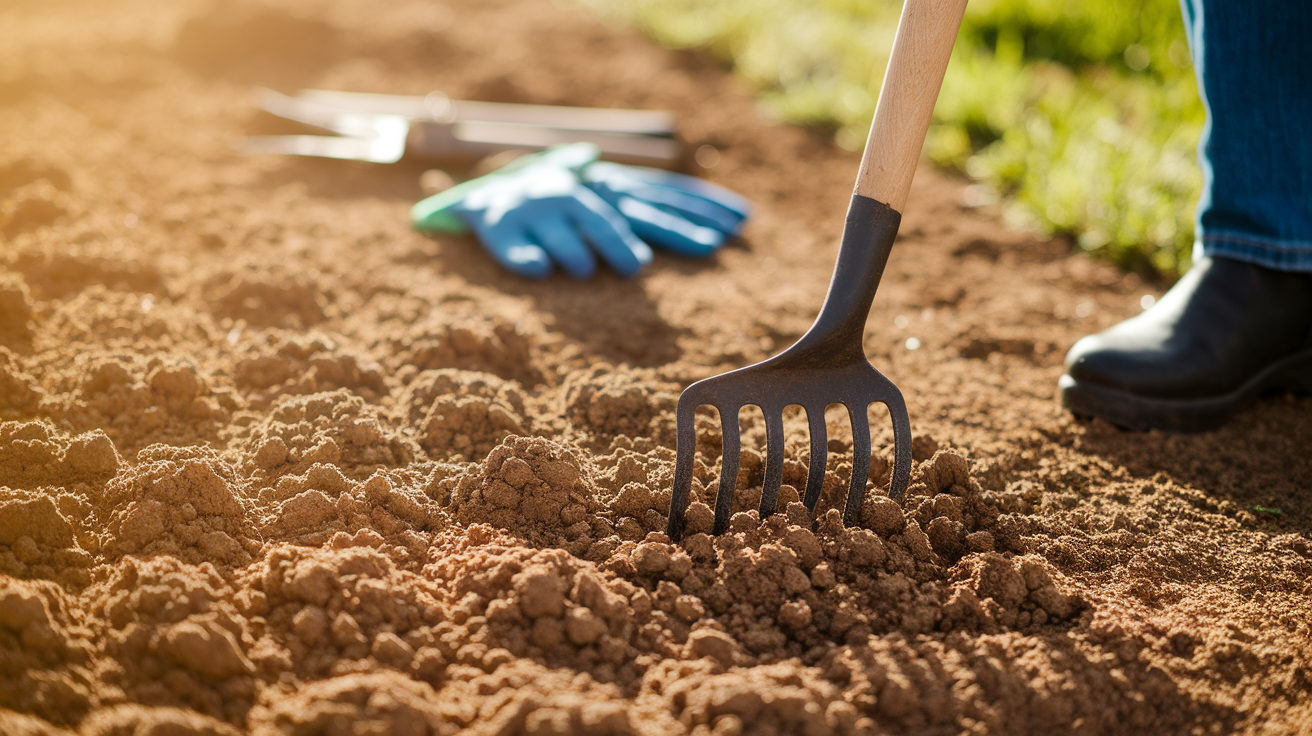
Hard soil makes it tough for grass roots to grow, so loosening it is a must.
- Use a garden fork, rototiller, or aerator to break up the compacted soil.
- Aim to loosen the top 2-3 inches of soil. This will allow your grassroots to spread more easily and strengthen over time.
Step 3: Add Organic Material
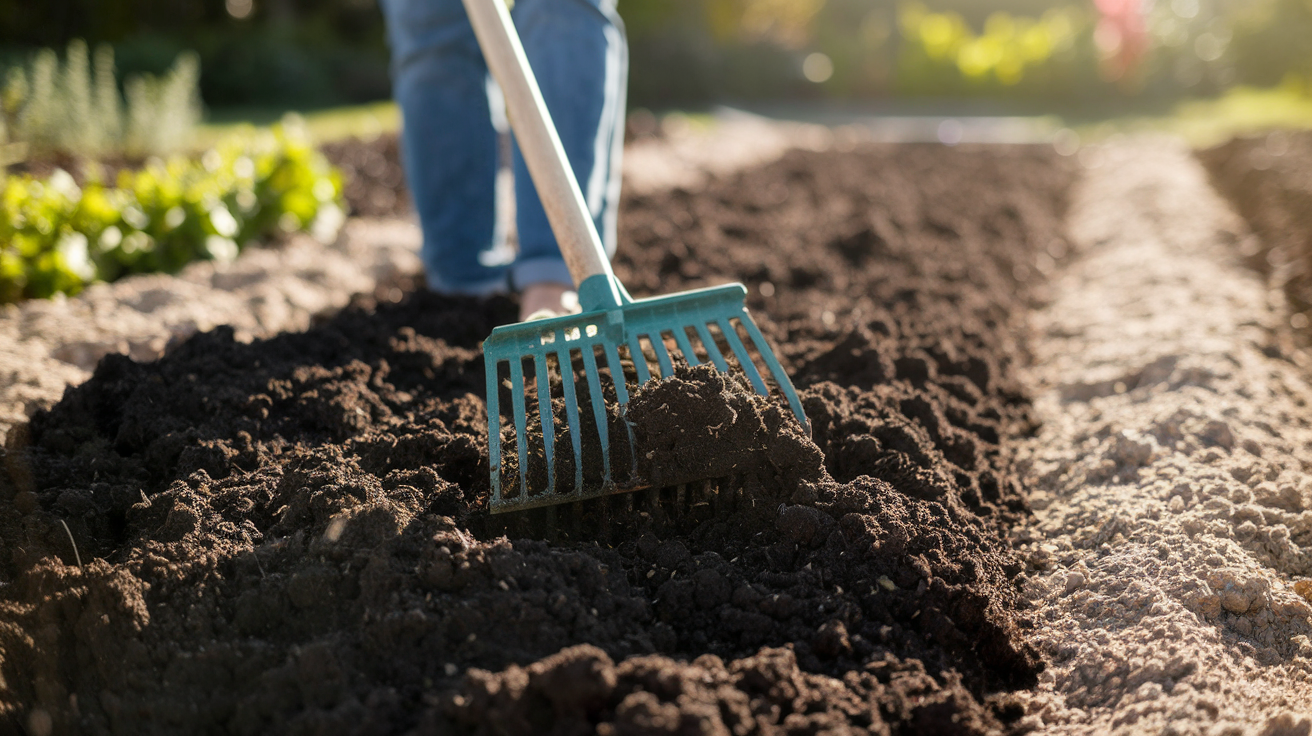
Now that your soil is loosened, it’s time to give it a boost! Mixing in compost or topsoil will improve its texture and make it more fertile for grass.
- Spread compost or topsoil evenly over the surface of the soil.
- Rake it in well to mix it into the soil. This will help retain moisture and provide essential nutrients to your grass.
Step 4: Level and Smooth the Area
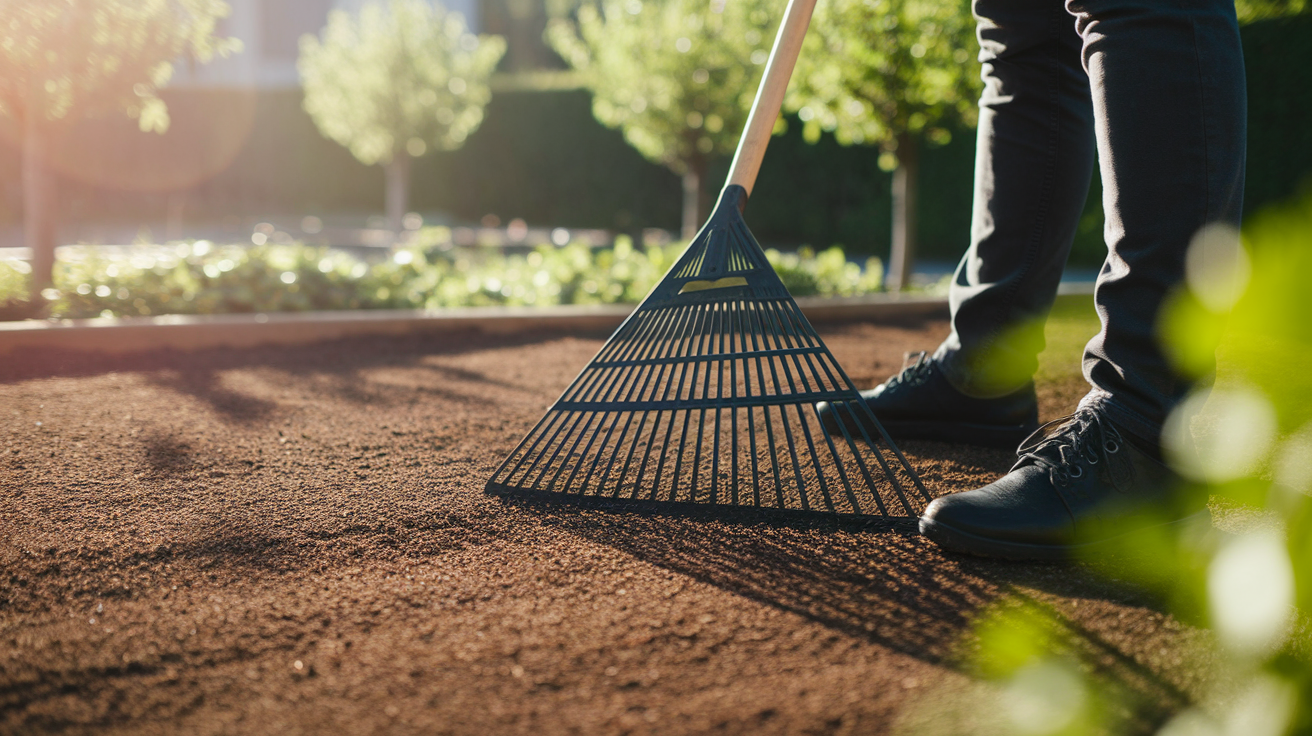
To create a solid foundation for your grass to grow, it’s important to smooth the soil.
- Grab a rake and flatten the surface, removing any uneven spots.
- Remove large rocks or debris to create a clean, smooth area for your seeds to settle into.
Step 5: Spread the Grass Seed
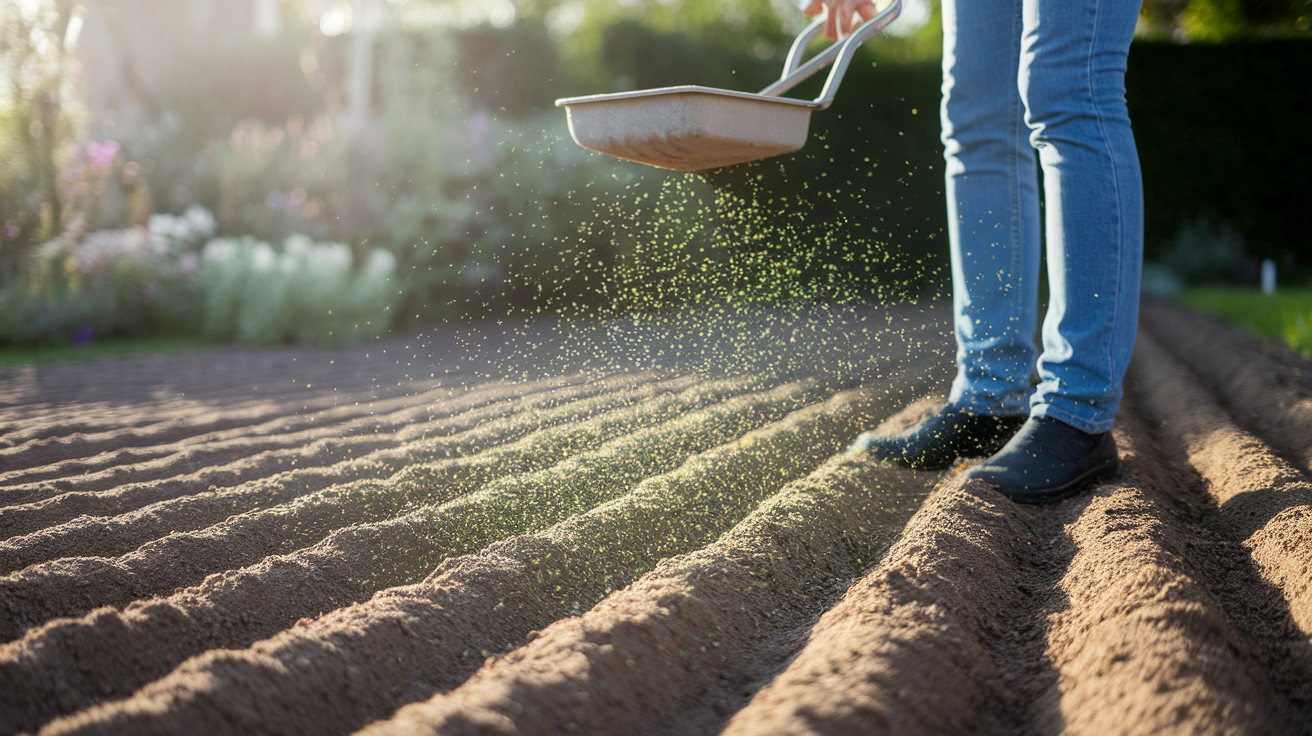
It’s time to plant your grass seeds! Follow the directions on your seed packet to determine how much seed to use.
- Use a hand spreader or a mechanical spreader for an even distribution of seeds.
- Make sure the seeds are spread evenly across the soil to give your lawn a nice, consistent growth pattern.
Step 6: Press Seeds Into the Soil
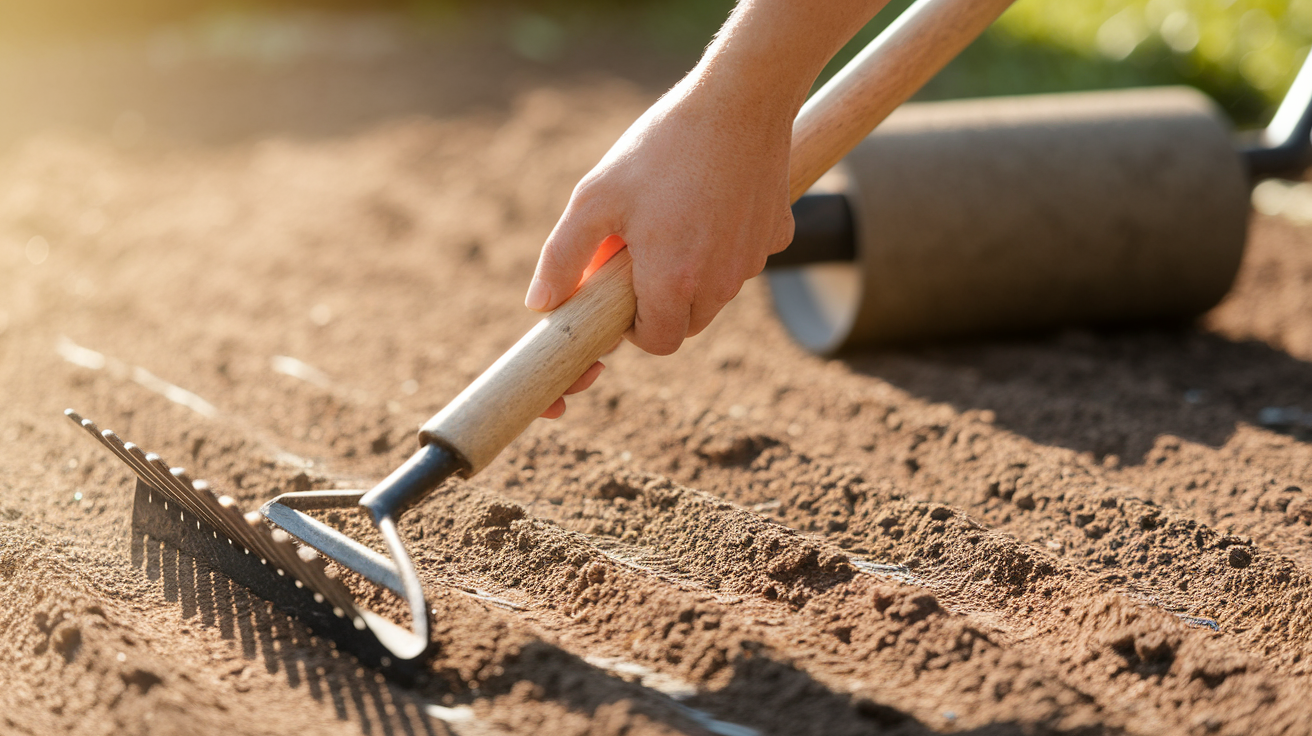
After spreading the seeds, it’s important to make sure they are in good contact with the soil.
- Lightly rake over the surface to cover the seeds with a thin layer of soil.
- If you have a lawn roller, gently roll the area to press the seeds into the soil. This ensures the seeds are properly set to germinate.
Step 7: Water Gently and Consistently
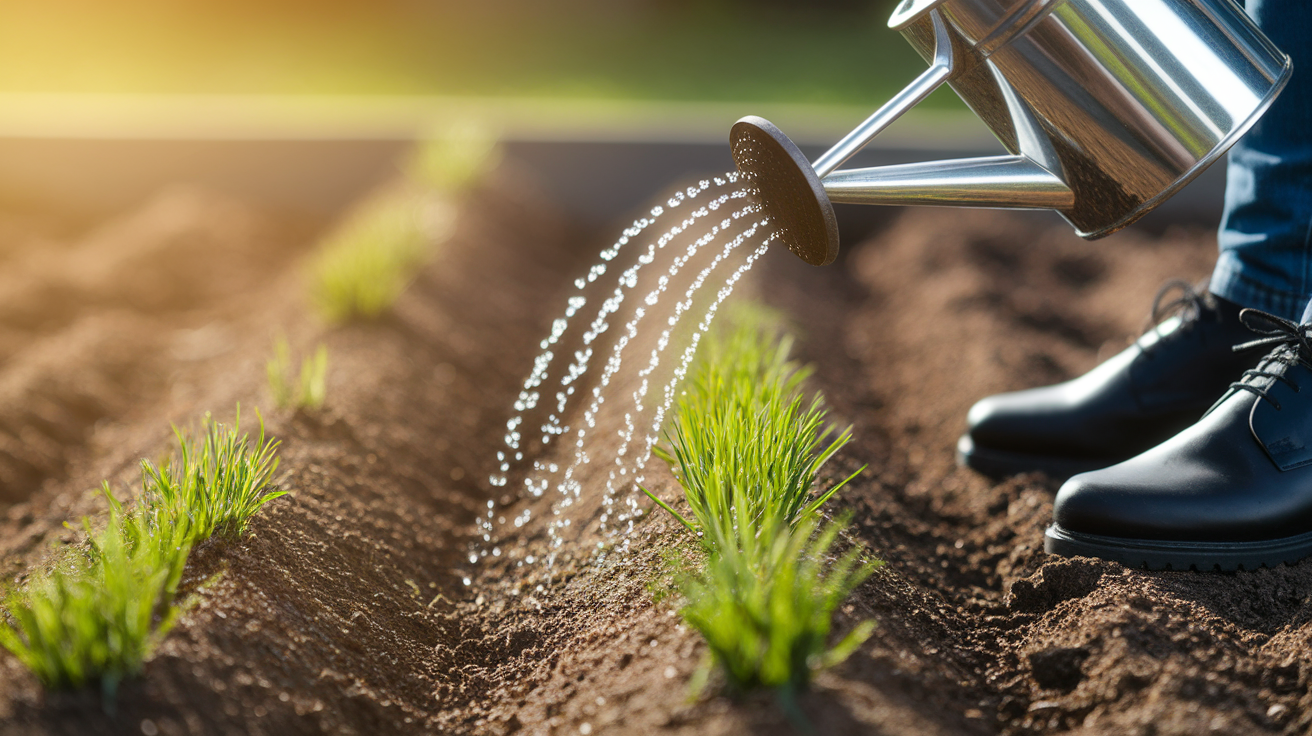
Finally, water your newly planted seeds to help them settle in.
- Mist the area lightly right after planting to keep the seeds moist.
- Keep the soil moist (but not soggy) and water daily until your grass starts to grow. Once established, you can cut back on watering.
By following these easy steps, you’ll soon have a healthy lawn growing where hard dirt used to be. Enjoy the process, and get ready for your beautiful new grass!
Common Mistakes to Avoid
Even with good intentions, a few simple mistakes can keep your grass from growing well. Here’s what to watch out for:
- Many people rush to plant without loosening the dirt or adding compost. Hard soil makes it difficult for roots to grow deep, leading to weak grass that won’t survive long-term.
- New grass needs just the right amount of water. Too much can drown the seeds, while too little dries them out. Keep the soil lightly moist until the grass is fully grown.
- Timing matters a lot. Planting grass in extreme heat or cold can stop it from growing. Early spring or fall, when temperatures are mild, gives seeds the best chance to grow strong.
Once your grass is planted, taking care of it during the first few weeks is important for it to grow strong and healthy. Here are some simple aftercare tips to keep your lawn in great shape
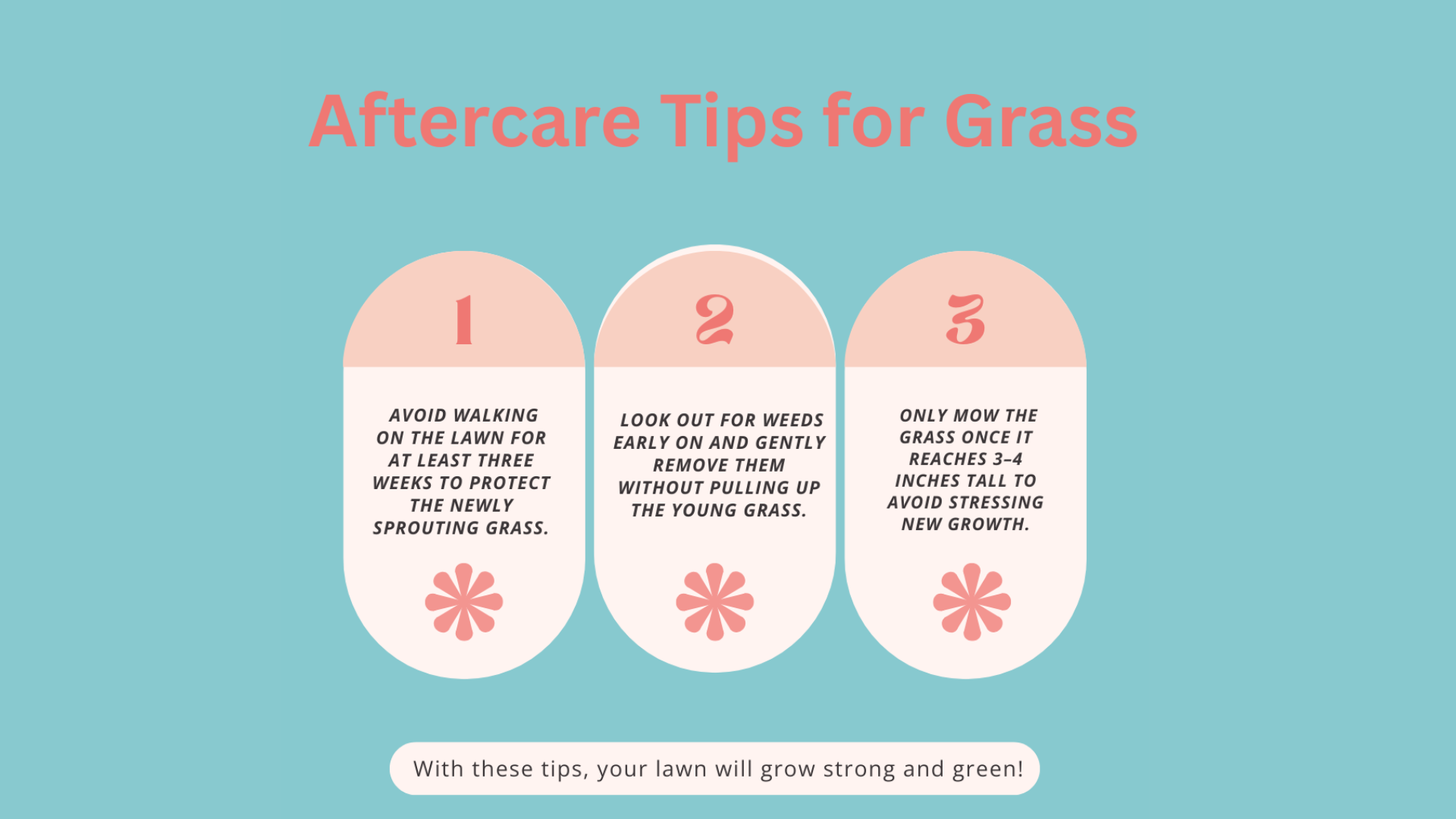
When to Expect Results
Grass takes time to grow, so don’t worry if you don’t see green right away. Knowing what to look for helps you understand if your lawn is on the right track.
- Germination Time Depends on The Grass Type: Most seeds start sprouting within 5 to 21 days. Cool-season grasses usually grow quicker than warm-season ones. Always check the seed bag for expected timing.
- Keep an Eye out For These Early Signs: Healthy growth looks fresh and even. Problem spots may appear uneven or discolored. Use the table below to spot the difference.
| Signs of Good Growth | Signs of Problem Areas |
|---|---|
| Light green, soft baby grass blades | Yellow, brown, or dry patches |
| Even coverage across the soil | Thin or bare spots with little sprouting |
| Steady, slow growth after week one | No change in appearance after two weeks |
Final Thoughts
Planting grass seed on hard dirt might seem tricky at first, but with the right prep, patience, and care, you can turn even the toughest soil into a beautiful, green lawn.
From understanding why hard dirt causes problems to following the right steps, avoiding common mistakes, and giving your new grass the care it needs, you’re setting yourself up for success.
Remember—healthy grass doesn’t happen overnight, but with the right approach, those first green sprouts will be worth the wait!
Ready to change your lawn? Grab your seeds, roll up your sleeves, and start building the lush, inviting yard you’ve always wanted. A little effort now means a greener, happier space later!
Frequently Asked Questions
How to Make Sure Your Grass Will Grow?
To ensure your grass grows, start by preparing the soil properly. Loosen compacted dirt, add compost, and choose the right grass type for your climate. Consistent watering and proper sunlight are also key factors!
How Long Should I Wait for Grass to Grow?
Depending on the type and weather conditions, grass typically takes 7-21 days to start sprouting. Be patient and keep the soil moist during this time. Full growth can take a few months to establish.
What’s the Lifespan of Grass?
Grass lifespan varies based on type and care. Most grass varieties live for a few seasons, but with proper maintenance, they can thrive for years. Regular mowing, watering, and aeration can keep your lawn healthy long-term.




